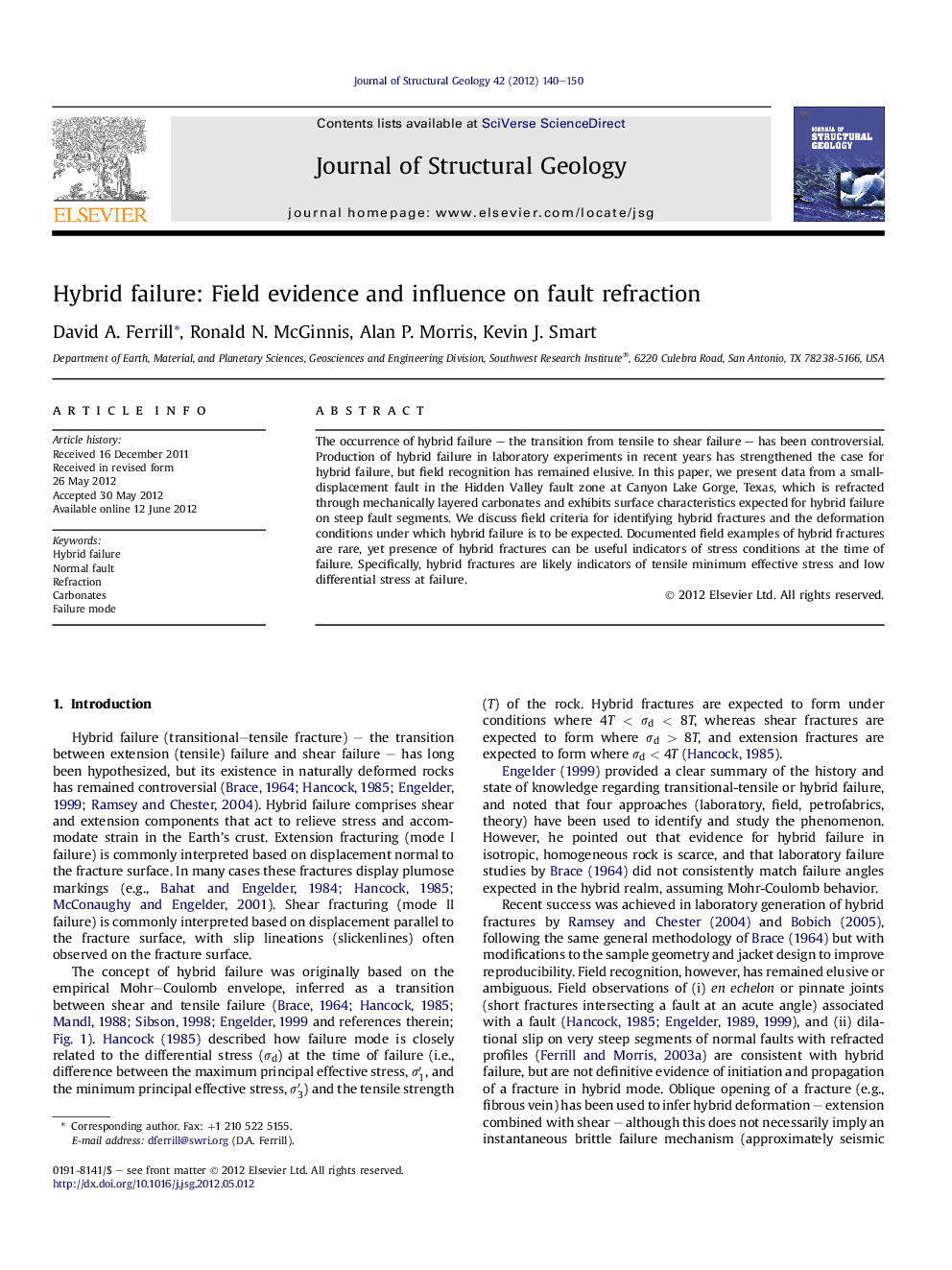| Article ID | Journal | Published Year | Pages | File Type |
|---|---|---|---|---|
| 4733411 | Journal of Structural Geology | 2012 | 11 Pages |
The occurrence of hybrid failure – the transition from tensile to shear failure – has been controversial. Production of hybrid failure in laboratory experiments in recent years has strengthened the case for hybrid failure, but field recognition has remained elusive. In this paper, we present data from a small-displacement fault in the Hidden Valley fault zone at Canyon Lake Gorge, Texas, which is refracted through mechanically layered carbonates and exhibits surface characteristics expected for hybrid failure on steep fault segments. We discuss field criteria for identifying hybrid fractures and the deformation conditions under which hybrid failure is to be expected. Documented field examples of hybrid fractures are rare, yet presence of hybrid fractures can be useful indicators of stress conditions at the time of failure. Specifically, hybrid fractures are likely indicators of tensile minimum effective stress and low differential stress at failure.
► Hybrid failure (transitional–tensile fracture) field example in carbonates characterized. ► Characteristics of natural hybrid failure (transitional–tensile fracture) defined. ► Hybrid fracture plays key role in fault refraction in mechanically layered rocks.
